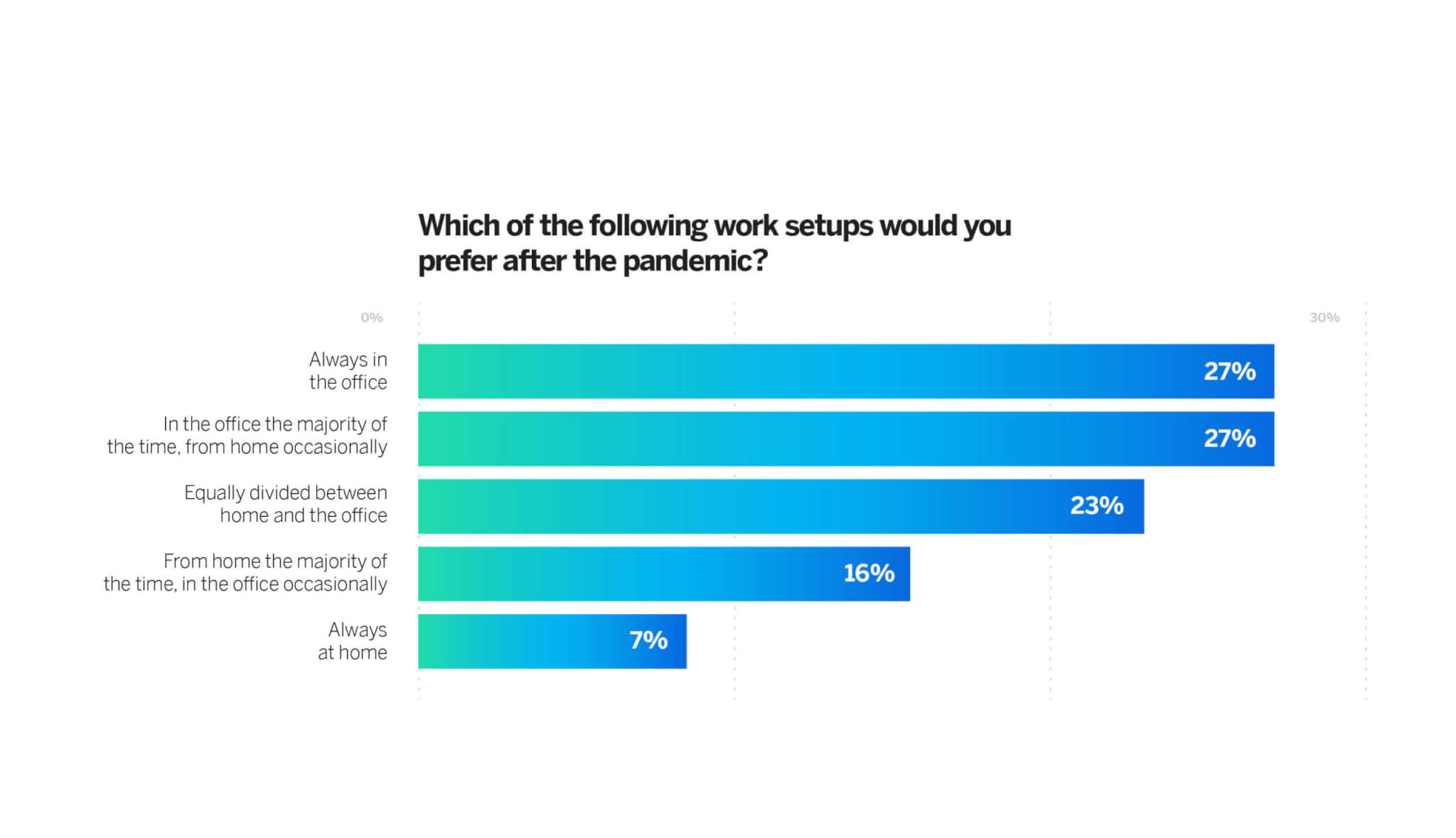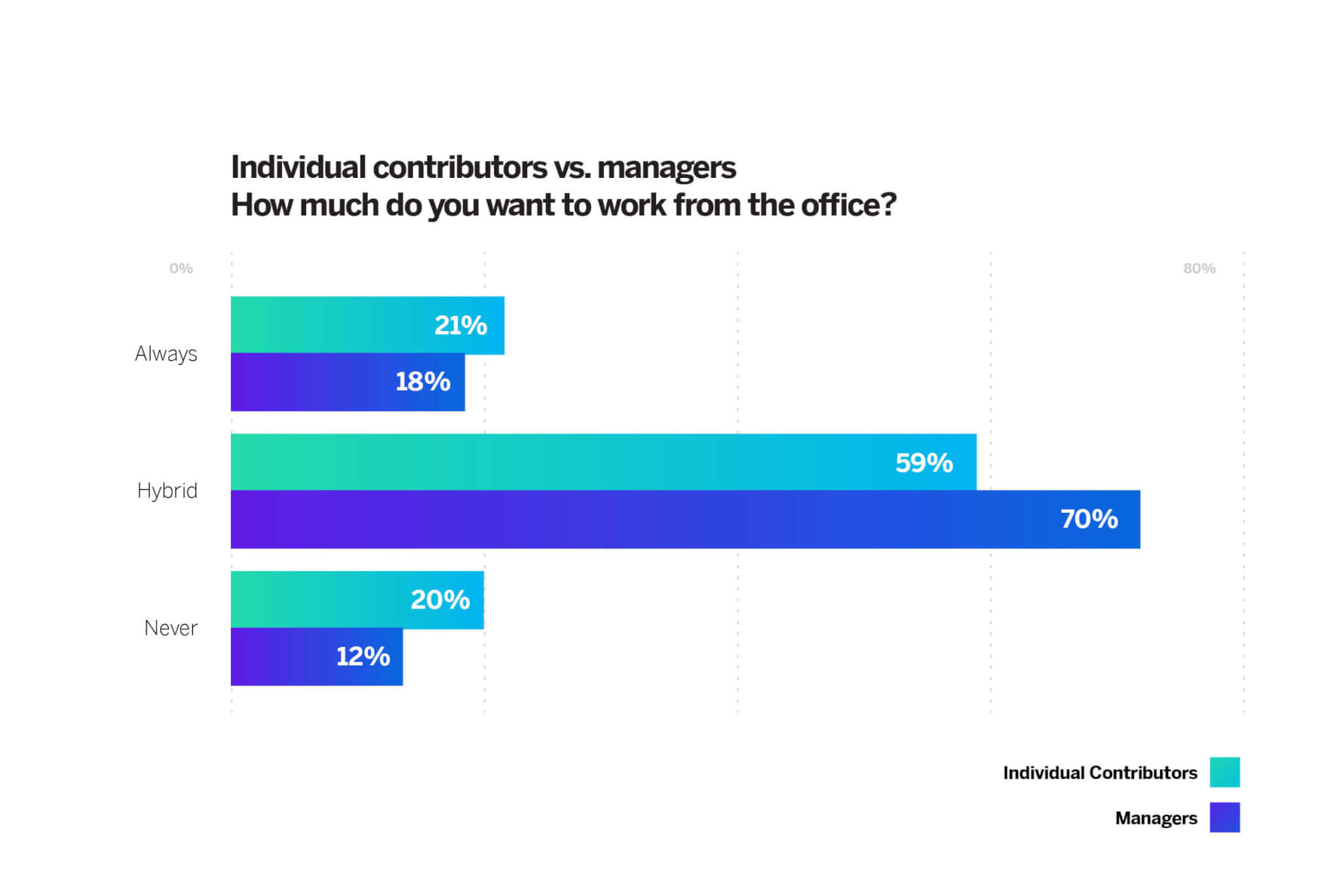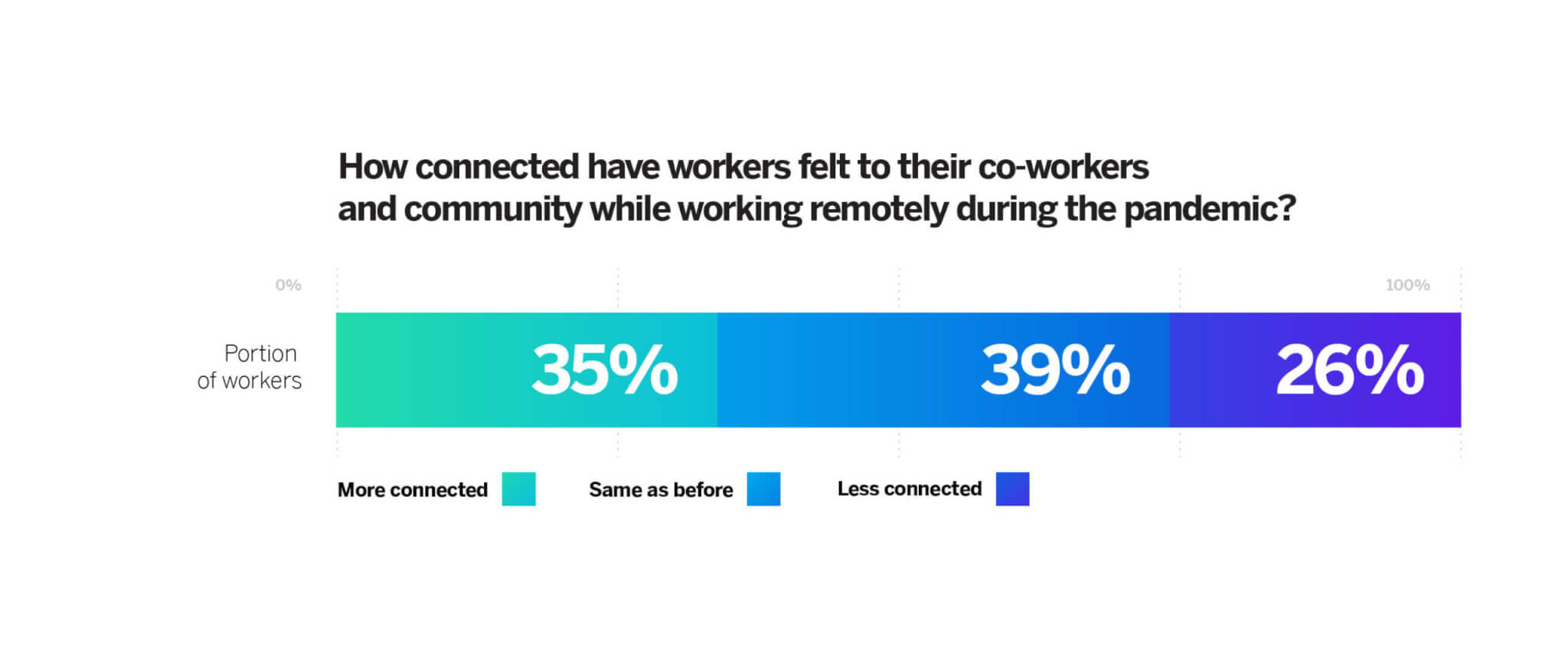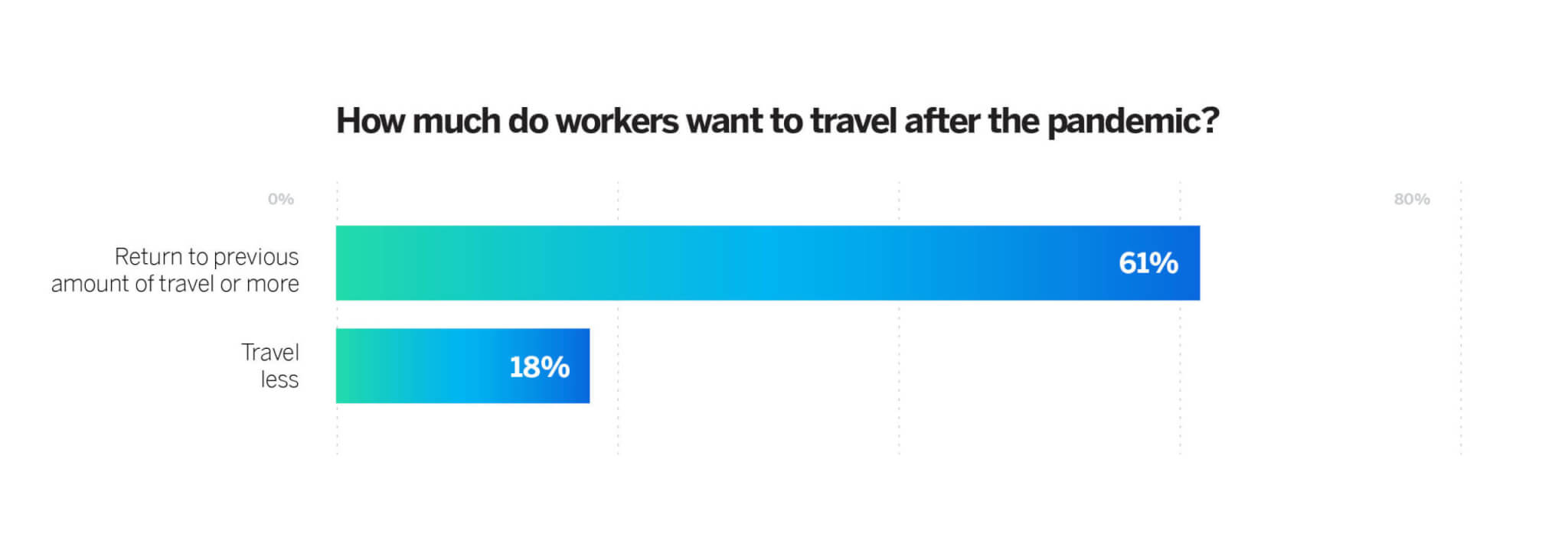Employee Experience
Report: Here’s how the pandemic changed the future of work
The world is in the middle of an experience transformation.
For all the difficult and devastating consequences of the pandemic, it has also taught us that a new and better way of working is possible. We’re learning that workplace flexibility and productivity go hand-in-hand, and many even found more meaning in their work during the pandemic than they did before.
In March, we asked over 4,000 global employees who had shifted from in-person to remote work at some point during the pandemic about their expectations and desires for the future of work. As companies and organizations navigate the return to work, they’ll need to recognize that people’s needs and priorities have shifted during the last year. Leaders have a unique opportunity to listen directly to their customers and employees and build on what they’ve learned during lockdown.
Download and read the full report here
There’s no one-size-fits-all solution, but understanding how people think and feel can help organizations make the right decisions at the right time in the right way.
Here’s what we found:
Flexibility is the future
The ability to travel, move, and live away from an office — while still working their jobs — gave many a flexibility they don’t want to give up after the pandemic is over.
- Over half of respondents (53%) said a long-term remote work policy would make them consider staying at their organization longer, and 10% said they would probably quit their job if they were forced back into the office full-time
- 80% of employees looking for a new job said it was important to them that their next job offer them the opportunity to live anywhere
- The younger generation seems to be more mobile: 25% of Gen Z and 17% of Millennials said they moved during the pandemic, compared to less than 10% of Gen X and Baby Boomers
Most don’t want to ditch the office completely, however. Many employees and leaders believe offices with a hybrid arrangement will outperform those without, especially as they cater to the individual needs of their employees.
While the majority of employees who switched to remote work said they preferred working from home at the beginning of the pandemic, they feel a little differently now. Here’s how it shakes out:

But these preferences change slightly depending on an employee’s role in their organization:

But no matter where an employee chooses to work, organizations can make the chosen workspace better by learning from the other:
- Those working in the office want: more quiet and private working spaces, more flexible meeting and collaborative areas, and more space between desks
- Those working at home want, when needed: access to office space, the ability to meet up with co-workers in-person, and access to physical resources in the office
Remote work made most of us more productive
The pandemic has taken a toll on us all. Some feel they logged on to work at the beginning of the pandemic and haven’t logged off since. But many also believe their productivity, purpose, well-being, and sense of community have improved at work since COVID-19 turned the world on its head.
- Productivity:
- 51% of employees believe they have been more productive working remotely, while 15% believe they have been less productive (the rest haven’t noticed a difference)
-
- 55% of managers think their direct reports have been more productive, while only 16% report less productivity
- 54% of Millennials and 53% of Gen Z say they’ve been more productive since working remotely, while only 34% of Baby Boomers say the same
The top reasons for improved productivity were flexible schedules, no commuting time, the ability to focus on work with fewer interruptions, and privacy and personal space.
- Purpose and Well-being:
-
- With everything else in flux, a majority of employees (53%) say their organization’s purpose resonates with them more now than it did before the pandemic
-
- Employees are 2X as likely to say their personal well-being has improved since the pandemic began than to say it has declined
- Gen Z adjusted to the pandemic better than any other generation, with almost 50% claiming that their personal well-being has improved since pre-COVID.
Finally, though colleagues have been working apart, they still feel connected, if not more so, to one another.

While 35% of employees say they feel more connected with their coworkers than before the pandemic, that number changes for different demographics:
- Men are 44% more likely than women to feel more connected since the pandemic began
- 43% of Black workers feel more connected since the pandemic began, compared to 27% among white workers
We want some changes to stay — and others to go back to normal
When challenges come, we hurt, we fail, we learn, and we grow. The pandemic has given the world a chance to change where it should, and go back to normal when it can.
Some believe industries like healthcare, retail, and restaurants have improved over the last year, and many would like to see some pandemic-era changes stick around, including outdoor seating at restaurants, curbside grocery pick-up, and pre-ordered shopping. Business travelers, however, look forward to getting back on the road and in the air:

The pandemic has been long, difficult, and devastating, but it’s also created an opportunity to reflect and experiment in ways we otherwise may not have. Organizations across the globe are rewriting their playbooks, and while one size won’t fit all, they can create better experiences by continuously listening to their employees, then taking action on the feedback they receive — now and in the future.
To read the Qualtrics XM Institute’s full report, visit: https://www.qualtrics.com/ebooks-guides/future-of-work-study-2021
Read the full report now
